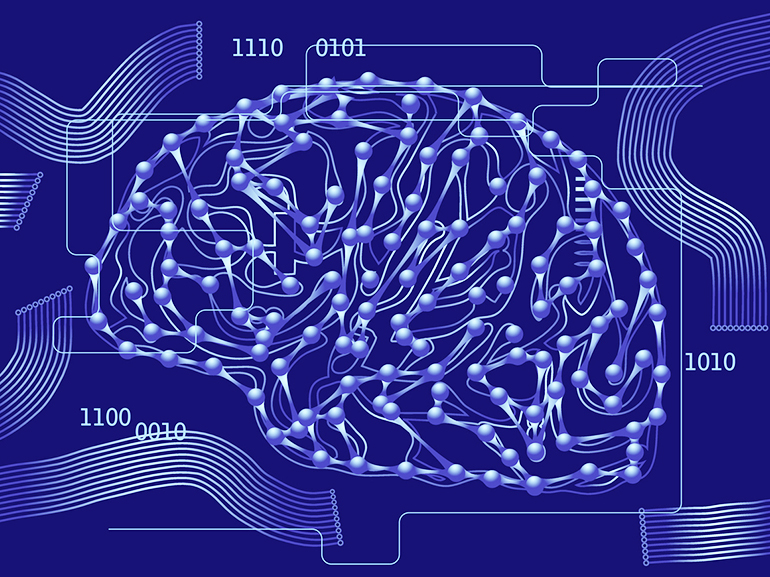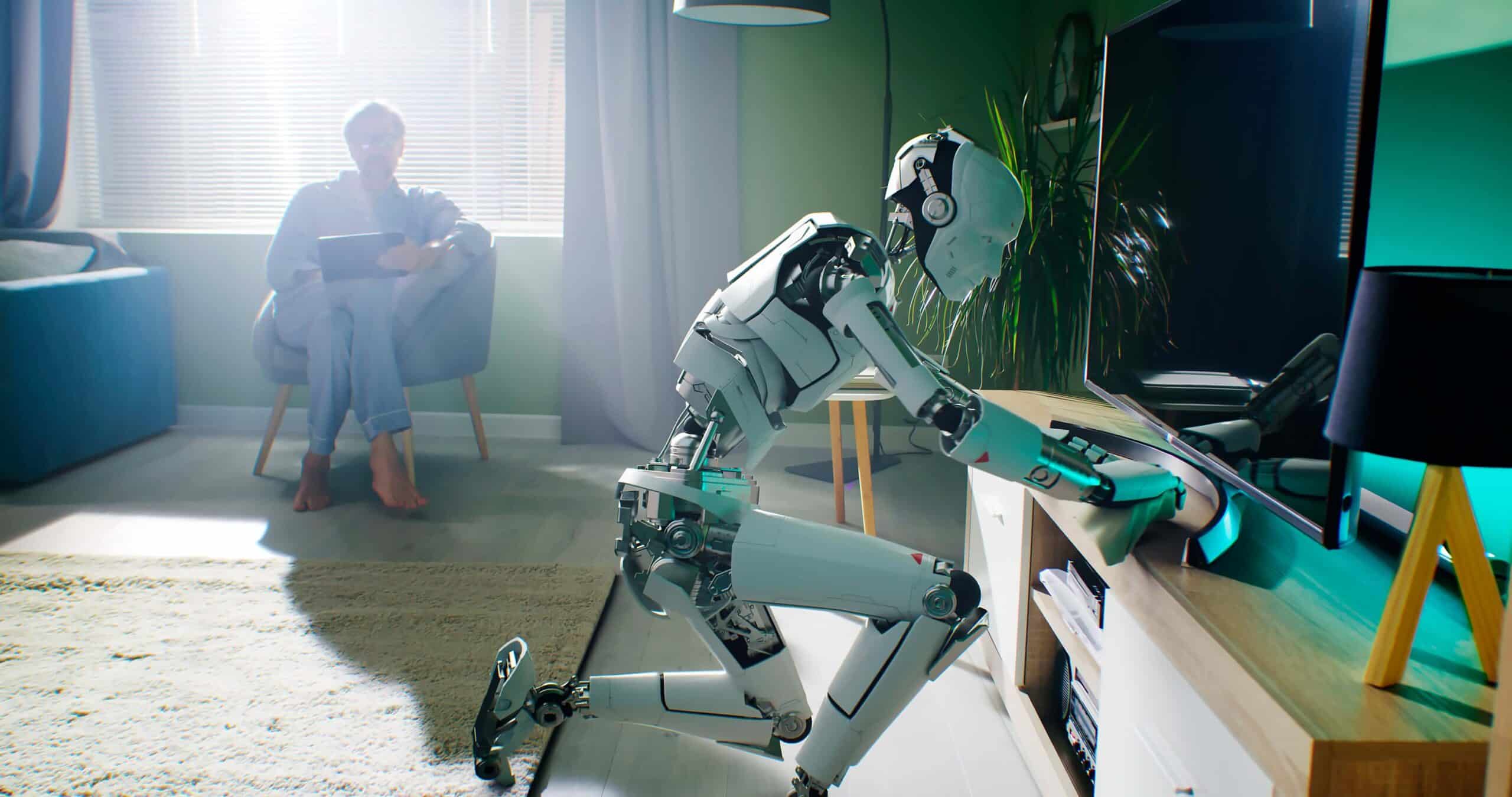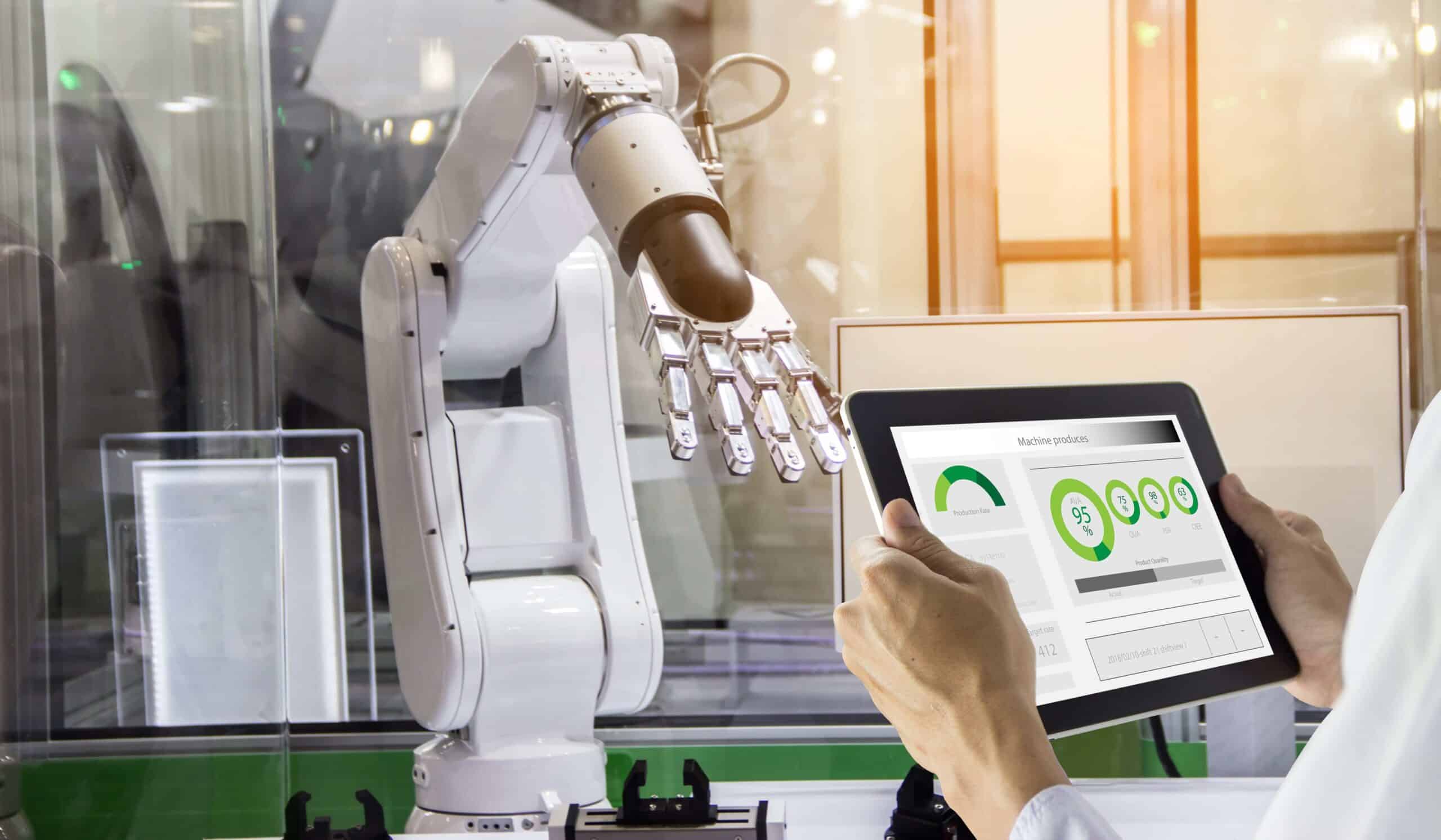- Data is a hot commodity
- Powerful chips will help AI operate faster
- A move to end ‘black box’ AI
- AI is taking care of our health
- Universities are getting an AI-powered makeover
- Smart algorithms will continue to transform the economy
The rise of artificial intelligence in the past few years has transformed the way we live and run business. From daily tasks such as grocery shopping to industrial processes like car manufacturing, AI is increasingly used to power our society. Such profound change has been met with both fear and hope, and just like any other disruptive tech, this one, too, is bound to create winners and losers. And to make sure they’re on the winning side, both corporate giants and innovative startups are investing in AI to gain a competitive edge and outperform the competition. A critical part of this strategy is tracking and analysing various trends that shape the future of AI and using them to secure the growth of your company.
That’s usually easier said than done, though, as various trends often converge and intertwine, sometimes with unexpected results. Nevertheless, understanding AI is critical, as its market value is set to grow from $7.3 billion this year to almost $90 billion in 2025. In fact, this tech will be so pervasive that, by 2020, 85 per cent of “customer interactions will be handled without a human”, with AI expected to eliminate 1.8 million jobs and create 2.3 million of new ones. Companies that deploy AI will boost profitability by up to 38 per cent and annual investment in AI, machine learning, and robotic process automation is expected to reach $232 billion by 2025.
The importance of this technology is evident, and to help you keep track of the forces that are shaping it, we’ve gathered and assessed the top trends that shouldn’t be overlooked in 2019. From the growing importance of data and new powerful chips to the revolution in healthcare and higher education, the future of artificial intelligence looks exciting.
Data is a hot commodity
Just like humans depend on past experience to act more intelligently in the future, AI, too, learns from data to become smarter and make better decisions. Many companies that introduced AI in the past, however, will inevitably realise that “their irrational exuberance for AI adoption must be equally met with solid efforts on an AI-worthy data environment”. Quality data suited for AI machines will therefore become a hot commodity next year, so much so that specialised vendors for crucial datasets are poised to make a hefty profit.
For instance, Bloomberg, an information and tech company, possesses vast amounts of historical data on the currency exchange market, stock prices, and US Treasury bonds. The company decided to team up with the Japanese AI startup Alpaca and use its datasets to develop software that “provides short-term market price forecasts for major markets such as USD/JPY, EUR/USD, AUD/JPY, CME Nikkei 225 Futures Index and US 10-year treasury bonds”. In other words, the AI-powered algorithm will try to make sense of market price swings and help managers make the best investment decisions.

Also, more data means more demand for data specialists “who are capable of handling sizable data sets in preparation for AI implementation”. In fact, IBM estimates that in four years, the number of jobs for data professionals in the US alone will increase to 2.7 million. More than half of those jobs will be in finance and insurance, professional services, and IT industries. These are also well-paid jobs as the average salary of data scientists is around $105,000 per year, while data engineering jobs pay roughly $117,000, depending on experience and qualifications. And one of the reasons why data science experts are critical is that failure to hire them can cause significant “disruption to ongoing product development and go-to-market strategies”.
Powerful chips will help AI operate faster
And as AI technology becomes increasingly powerful, it’ll require equally powerful hardware to run complex mathematical computations. To overcome the limitations of existing CPUs, chip manufacturers like NVidia, Qualcomm, and Intel are expected to produce “specialized chips that speed up the execution of AI-enabled applications” next year. These new chips will be optimised for specific AI-related tasks in the field of computer vision, natural language processing, and speech recognition. Amazon, Microsoft, Google, and Facebook will also invest more in the production of chips that can improve operations such as query processing and predictive analytics. The AI chip market will therefore keep growing, and its value is expected to reach $10.8 billion by 2023, powered by, among other things, an increase in “demand for smart homes, development of smart cities, and emergence of quantum computing”.
A move to end ‘black box’ AI
Meanwhile, the inner workings of many AI systems currently in use, some of which we depend on for our lives sometimes, remain unknown to citizens and even authorities. This ‘black box’ problem is a potential roadblock to the growth of AI, since “users will demand real-world, plain English examples and explanations for full transparency” of how AI actually functions, says Tom Wilde, the CEO and founder of the AI company Indico. We might soon see companies taking measures to increase the transparency of their AI as the prominence of this issue “in public discourse is likely to grow”.
No one can expect people to be satisfied with a “because the machine said so” explanation as to why their insurance rates increased or their job application got rejected. Instead, the power granted by the EU General Data Protection Regulation (GDPR), the EU data privacy regulation, could force companies to provide meaningful explanation on how their AI algorithms actually make those decisions. And even without the pressure from public institutions, companies would be wise to critically examine the consequences of the algorithms they’ve built, the inner workings of which they’re often unable to fully explain. As Tommi Jaakkola, a professor of computer science at MIT, says, “Whether it’s an investment decision, a medical decision, or maybe a military decision, you don’t want to just rely on a ‘black box’ method.”
AI is taking care of our health
But for all its complexity, AI can also be a force for good, especially in the healthcare industry. Accenture predicts that in the US alone, AI could potentially save $150 billion for the healthcare economy by 2026, while the AI health market is set to reach a value of $6.6 billion by 2021. The applications for this technology in healthcare are impressive. Smart algorithms, for instance, were used to predict the efficacy of immunotherapy in cancer patients by analysing medical images and could one day even “identify biological phenomena in a tumour located in any part of the body without [doctors] having to perform a biopsy”. Similar projects will continue in the future, and we’ll also see an increase in the number of AI-powered health wearables that track a range of conditions such as blood pressure and blood sugar levels. This will enable doctors to remotely monitor our health and act on time.
Universities are getting an AI-powered makeover
Lastly, universities are expected to use more AI solutions in their classrooms and campuses as the learning preferences of new, tech-savvy generations are different than those of their predecessors. Generation Z – those born between 1996 and 2010 – now make up the majority of the 16 million Americans that attend colleges and are comfortable with using a variety of digital tools such as Skype or online forums to study. Most of them think that learning isn’t just confined to the classroom, and 51 per cent think that “they learn best by doing.”
AI teaching assistants, adaptive learning platforms, and AI-based student advisory services are therefore some of the ways higher education might accommodate those trends. These tools could help students receive personalised education that suits their skills and preferences, instead of the “traditional model of ‘one module guide for all’”. And as the pace of change intensifies, it won’t take too long before “universities may well have changed beyond all recognition”.
Smart algorithms will continue to transform the economy
AI has been growing by leaps and bounds in the past few years, and the use of this technology is what often separates winners from losers in today’s economy. Smart algorithms have transformed a number of industries, from manufacturing and agriculture to retail and healthcare, and as we move into 2019, knowing which trends will shape the future of artificial intelligence will only become more important. Companies are therefore well advised to not only keep refining their AI software, but also to focus on acquiring quality data. Also, it’s important they don’t miss out on using cutting-edge AI chips and applying lessons from sectors such as healthcare and higher education.
Next year will be the year when AI increasingly moves “from the lab to offices, factories, hospitals, construction sites, and consumers’ lives”. And as executives seek returns on their AI investments, it’s important to keep the bigger picture in mind and integrate this tech with other technologies like blockchain, the IoT, and big data analytics. That way, businesses can exploit the full potential of AI and monetise it in various ways by innovating products, achieving cost savings, and improving customer experience. PwC, a consulting and tax services firm, concludes that in 2019 “AI will need its own organizational structure and workforce plans; trustworthy algorithms and the right data to train those algorithms; a plan to reinvent the business to grow revenue and profits with AI; and convergence with other existing and emerging technologies.” This is an ambitious set of goals, but achieving them is critical for remaining competitive in the modern economy.







